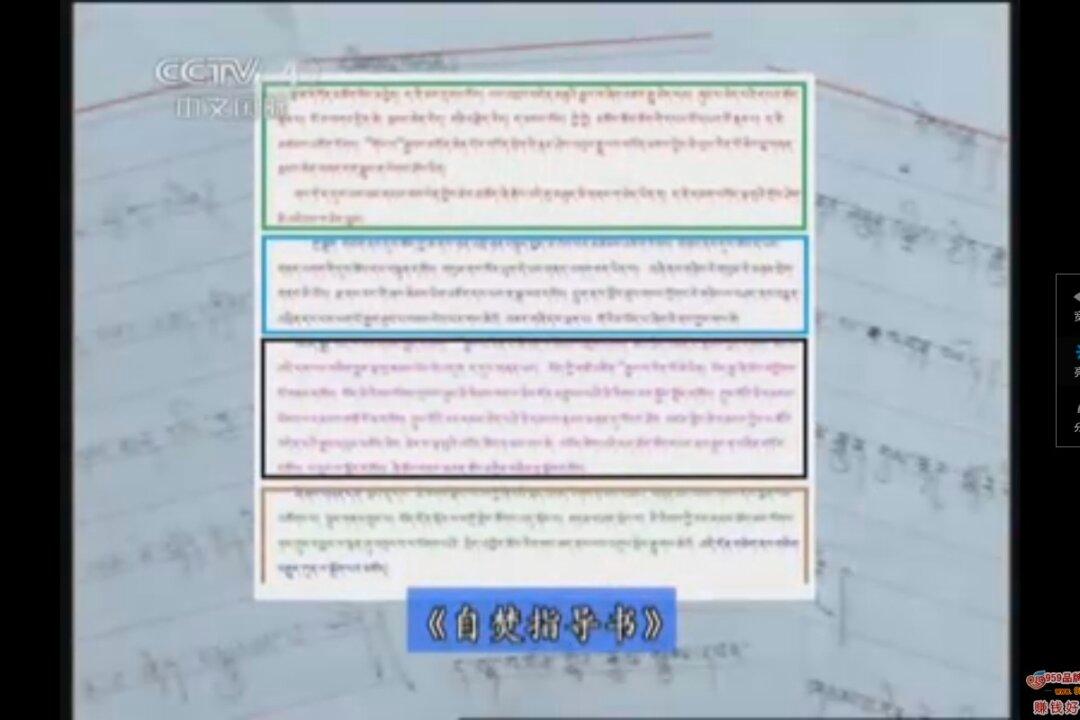A documentary about a putative guidebook for Tibetans to self-immolate was broadcast via the Communist Party’s chief propaganda mouthpiece recently, and was soon denied as slander by a representative of the Dalai Lama.
Since 2009, 117 Tibetans have set themselves alight, including women and teenagers. Speaking at the Council on Foreign Relations, Tibetan Prime Minister Lobsang Sangay said that his exiled Central Tibetan Administration (CTA) discourages such drastic action. As a solution to the escalating problem, he called for Beijing to adopt a “middle-way policy” in the region, and to implement “genuine autonomy as per the framework of the Chinese constitution.”
State-run China Central Television (CCTV) ran the documentary on May 16, purportedly detailing research and interviews conducted in areas of Chinese-occupied Tibet where some of the self-immolations took place.
The documentary claimed that the online manual provides irrefutable evidence that “Dalai clique” members of the government in exile have been inciting the burnings. It named the author as Lhamo Je, and described him as having been a two-term “member of the Parliament,” now holding an important position in its “educational system.”
However, the CTA has previously stated that Llhamo Je lives in France, and is neither part of the Tibetan government nor the Dalai Lama’s private office. A March 7 press release by Foreign Minister Dicki Chhoyang said: “Such writings are irresponsible and unnecessarily give excuses to the Chinese government to resort to the blame game, and shirk its responsibility for the root causes leading to self-immolations.”
Dawa Tsering, chairman of the Tibet Religious Foundation of the Dalai Lama in Taiwan, said in an article in Hong Kong’s Open Magazine on May 17 that Chinese authorities were using the documentary to stigmatize self-immolators. “Since the beginning, the Chinese government has been unwilling to acknowledge the legitimacy of the appeals of those who immolate. Instead, they use every possible means of slander in an attempt to cover up the essence of the issue, and shift the focus.”
The CCTV documentary cited several alleged self-immolation cases, including a failed attempt in March by a 26-year-old villager named Banmajia in Garze Tibetan Autonomous Prefecture, that had “brought this ‘guide’ to light.” It claimed that local police stopped the young man at the last minute, and also found a suicide note–written in accordance with the manual–that had been photocopied many times.
According to the documentary, the self-immolation guidebook is supposed to consist of four parts: ideology; instructions; slogans; and “other non-violent activities.” The book is supposed to teach the need to “sacrifice,” or pick important dates and places for immolation.
On May 20, the exiled Tibetan administration published a revised version of “Why Tibet Is Burning,” its White Paper about the reasons behind the self-immolations, to coincide with International Tibet Solidarity Day.
In the new foreword of the book, prime minister Lobsang Sangay writes: “This deepening crisis in Tibet is fueled by China’s total disregard for the religious beliefs, cultural values, and reasonable political aspirations of the Tibetan people. The crisis grows out of China’s political repression, cultural assimilation, economic marginalization, social discrimination, and environmental destruction in Tibet.
“We issue this report to illuminate the deeper layers of the current crisis in Tibet. It is our hope it will motivate and assist members of the international community to urge the new leadership, led by Xi Jinping, to initiate wise new policies in regard to the Tibetan people.
“As we have repeatedly said, the blame for and the solution to the crisis in Tibet lies in the hands of the Chinese leadership.”
A Different Manual
The Tibetan Center for Human Rights and Democracy (TCHRD) released information on May 13 about a Party document called “Guide on Psychiatric Wellbeing While Maintaining Stability,” published by the People’s Armed Police (PAP) in Sichuan Province, that was being circulated among police and officials at the provincial, prefecture, and county levels.
The rights group said that the Chinese manual refers to psychological and moral issues arising during “stability maintenance work”—that is, violently putting down protests, shooting unarmed civilians, and so on—in Tibetan areas, and was drafted by mental health experts in Chinese military and armed hospitals.
The 25-page guidebook includes 29 questions and answers on the problems faced by armed police in Tibet. It mentions “common psychological traumas,” and advice on how to “further improve” stability maintenance work in Tibetan areas, “particularly the PAP officers and other armed forces who need thorough educational and ideological guidance on their work.”
The TCHRD article notes that although the manual was drafted before new Party leader Xi Jinping took office, there is no sign of change in the regime’s harsh policies regarding Tibet.
Research by Lisa Huang




